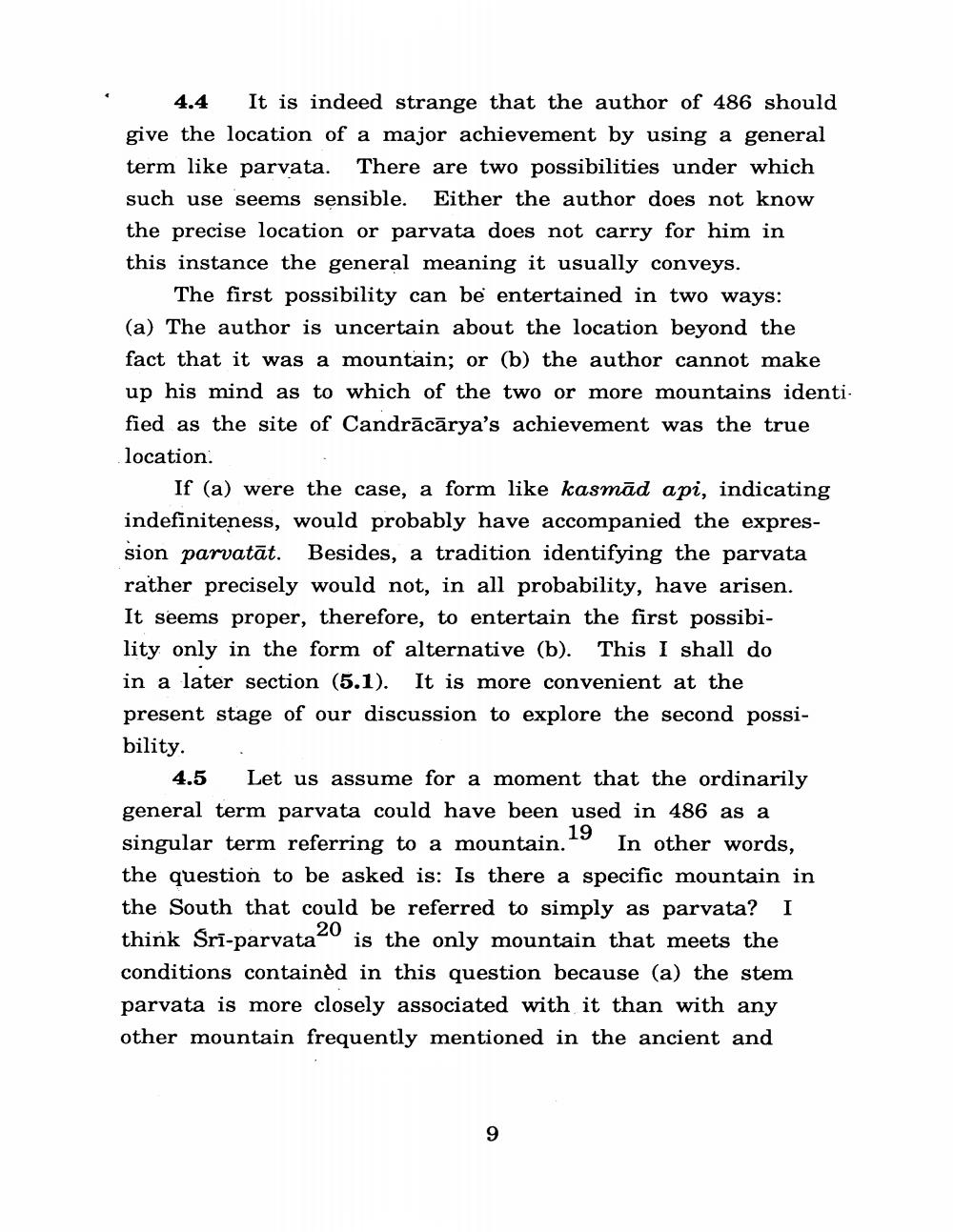Book Title: Paninian Studies Author(s): Ashok Aklujkar Publisher: Ashok Aklujkar View full book textPage 9
________________ 4.4 It is indeed strange that the author of 486 should give the location of a major achievement by using a general term like parvata. There are two possibilities under which such use seems sensible. Either the author does not know the precise location or parvata does not carry for him in this instance the general meaning it usually conveys. The first possibility can be entertained in two ways: (a) The author is uncertain about the location beyond the fact that it was a mountain; or (b) the author cannot make up his mind as to which of the two or more mountains identified as the site of Candrācārya's achievement was the true location. If (a) were the case, a form like kasmād api, indicating indefiniteness, would probably have accompanied the expression parvatāt. Besides, a tradition identifying the parvata rather precisely would not, in all probability, have arisen. It seems proper, therefore, to entertain the first possibility only in the form of alternative (b). This I shall do in a later section (5.1). It is more convenient at the present stage of our discussion to explore the second possibility. 4.5 Let us assume for a moment that the ordinarily general term parvata could have been used in 486 as a singular term referring to a mountain. In other words, the question to be asked is: Is there a specific mountain in the South that could be referred to simply as parvata? I think Sri-parvata is the only mountain that meets the conditions contained in this question because (a) the stem parvata is more closely associated with it than with any other mountain frequently mentioned in the ancient andPage Navigation
1 ... 7 8 9 10 11 12 13 14 15 16 17 18 19 20 21 22 23 24 25 26 27 28 29 30 31 32 33 34 35 36 37 38 39 40 41 42 43 44 45 46 47
